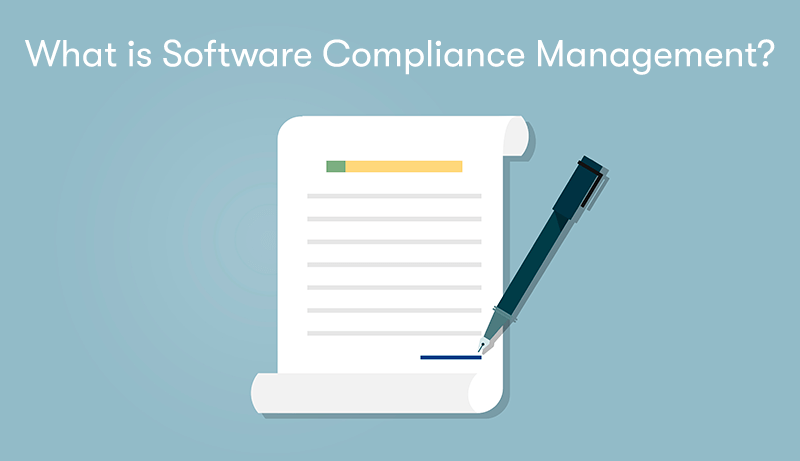What is Software Compliance Management?
Welcome to our in-depth exploration of Software Compliance Management, a critical aspect often overlooked in the fast-paced world of information technology. In this era where software pervades every facet of business operations, understanding and implementing effective Software Compliance Management is more than just a legal requirement; it's a strategic imperative.
This comprehensive guide will unravel what Software Compliance Management entails, its multifaceted importance in safeguarding businesses against legal, financial, and reputational risks, and how it intricately weaves into the broader fabric of IT Asset Management.
Whether you're a seasoned IT professional or new to the field, this blog aims to enhance your understanding and appreciation of this essential business discipline.
Let's dive in.
What is Software Compliance Management?
Software Compliance Management refers to ensuring that software within an organisation is used and managed according to various legal, ethical, and technical standards. This process involves several key aspects:
Licensing Compliance
Ensuring that all software used in the organisation is properly licensed. This means that the organisation has the right to use the software in the way it is being used, including the correct number of licenses, and is adhering to the terms of the software license agreements.
Regulatory Compliance
This involves ensuring that the software complies with all relevant laws and regulations. For example, specific industries have regulations regarding data security, privacy, and other issues that software must comply with.
Internal Policies and Standards Compliance
Many organisations have internal policies and standards regarding software usage, such as which types of software are permitted, how software should be deployed and managed, and how data should be handled.
Audit and Documentation
Regular audits are conducted to ensure compliance. This often involves documenting software purchases, deployments, and usage patterns and ensuring there are records to prove compliance.
Risk Management
Identifying and managing the risks associated with non-compliance, which can include legal risks, financial risks, and risks to the organisation's reputation.
Educating and Training Employees
Ensuring that all employees are aware of the compliance requirements and understand the importance of adhering to them.
Software Compliance Management is crucial for organisations to avoid legal issues, financial penalties, and damage to reputation that can result from non-compliance. It's a continuous process that requires coordination between various organisational departments, including IT, legal, finance, and human resources.
Why is Software Compliance Management Important?
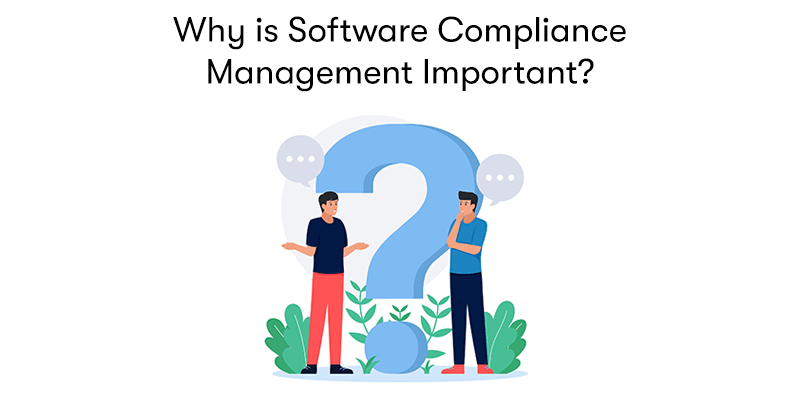
Software Compliance Management is important for several key reasons:
Legal Compliance and Avoidance of Penalties
The most immediate reason is to avoid legal issues and penalties for using unlicensed or improperly licensed software. Violating software licenses can lead to lawsuits and significant financial penalties.
Security and Risk Management
Properly licensed and compliant software will likely be up-to-date and patched for security vulnerabilities. Non-compliance can lead to security risks, such as malware infections and data breaches, which can severely affect an organisation.
Cost Management
Effective software compliance management can help organisations avoid unnecessary expenditures. By keeping track of software licenses, an organisation can avoid purchasing more licenses than needed or identify opportunities to utilise existing licenses more effectively.
Maintaining Reputation
Compliance issues can lead to negative publicity, harming an organisation's reputation. Maintaining good standing in terms of compliance is crucial for preserving the trust and confidence of customers, partners, and stakeholders.
Regulatory Compliance
Many industries are subject to specific regulatory requirements regarding data protection, privacy, and other IT-related areas. Software compliance management ensures software use aligns with these regulations, avoiding regulatory penalties and guaranteeing trust in business practices.
Operational Efficiency
Well-managed software compliance helps in maintaining an efficient IT infrastructure. It ensures that the organisation uses the right tools effectively, reducing the likelihood of operational disruptions caused by software-related issues.
Support and Updates
Using properly licensed software ensures access to vendor support and regular updates. This support is crucial for resolving issues quickly and keeping software functioning optimally.
Intellectual Property Rights Respect
By adhering to software compliance, organisations respect the intellectual property rights of software creators, contributing to a fair and ethical business environment.
In summary, Software Compliance Management is crucial for legal, financial, security, operational, and reputational reasons, making it an essential aspect of modern business practices.
How to do Software Compliance Management?
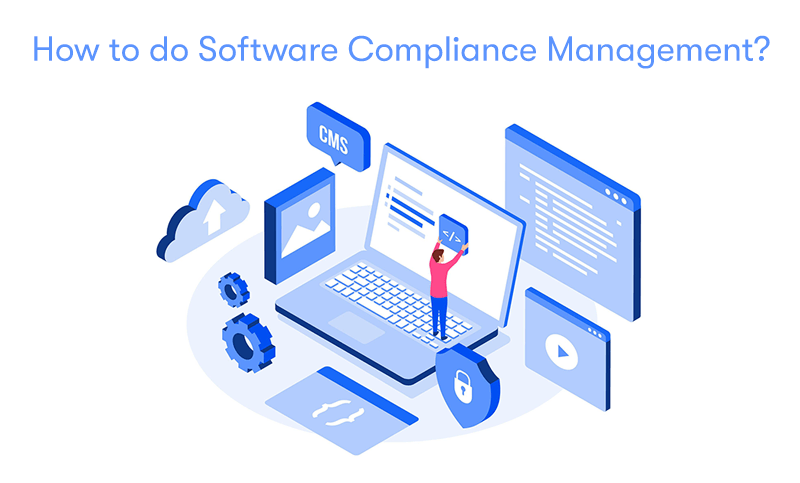
Implementing effective Software Compliance Management in an organisation involves several steps and best practices:
Inventory and Audit of Software Assets
Conduct a comprehensive inventory of all software assets. This includes identifying all installed software across the organisation's devices and networks.
Regularly audit software usage to ensure it aligns with the existing inventory.
Understand and Manage Software Licenses
Carefully review and understand the terms and conditions of software licenses. Ensure that the organisation complies with these terms.
Maintain a database of all software licenses, including the number of allowed installations, usage terms, renewal dates, and costs.
Implement a Software Compliance Policy
Develop and implement a formal software compliance policy. This policy should outline how software will be purchased, installed, and used within the organisation.
Ensure the policy addresses compliance with licensing agreements, regulatory requirements, and internal standards.
Train and Educate Employees
Educate employees about the importance of software compliance and the organisation's specific policies.
Provide training on the correct procedures for installing and using software.
Use Software Asset Management (SAM) Tools
Implement SAM tools to automate the tracking and management of software assets. These tools can help manage inventory, license compliance, and identify unauthorised software.
Regular Compliance Audits and Reviews
Schedule regular audits to review software compliance. This can be done internally or by external auditors.
Use audit results to identify non-compliance issues and take corrective action.
Manage Software Updates and Patches
Ensure software is regularly updated and patched to comply with security standards and regulations.
Keep records of updates and patches as part of compliance documentation.
Vendor Management
Establish good relationships with software vendors. This can help in understanding license terms better and resolve any compliance issues more effectively.
Review and renegotiate licenses as needed, especially when organisational needs change.
Documentation and Record-Keeping
Keep detailed records of all software purchases, licenses, installations, and audits.
Maintain documentation that demonstrates compliance, which is crucial in case of legal scrutiny or audits.
Risk Management and Mitigation
Assess the risks associated with non-compliance and develop strategies to mitigate these risks.
Plan for contingencies in case of software vendor disputes or legal challenges.
Stay Informed About Legal Changes
Keep updated with changes in software licensing laws and regulations that could affect your organisation.
By following these steps, an organisation can effectively manage its software assets, ensure compliance with various legal and regulatory standards, and minimise the risks associated with software non-compliance.
What Happens if a Business is Non-Compliant?
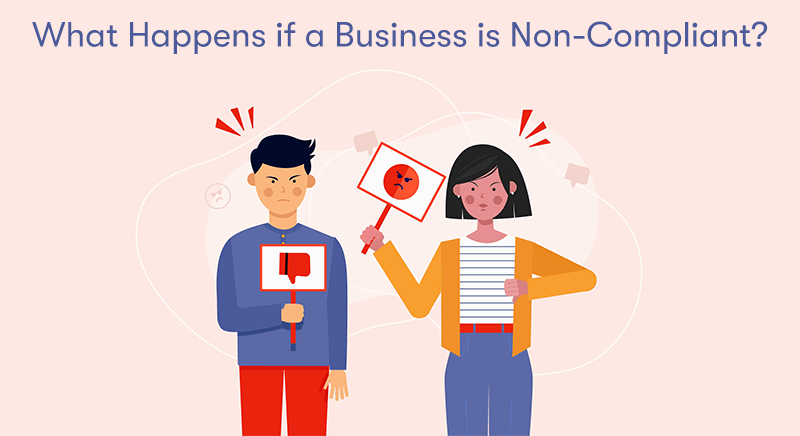
If a business is non-compliant with software licensing and regulatory requirements, it can face several significant consequences:
Legal Action and Fines
Legal action from software vendors or regulatory bodies is the most immediate and severe consequence of non-compliance. This can result in costly lawsuits and hefty fines, especially if the non-compliance is found to be wilful or extensive.
Audit Costs
If a software vendor suspects non-compliance, they may initiate an audit. The process of undergoing an audit can be costly regarding both the financial burden and the resources required to facilitate the audit process.
Operational Disruptions
An audit or legal action can lead to operational disruptions. For example, if a company is forced to remove unlicensed software, it might disrupt normal business operations until compliant software can be procured and installed.
Damage to Reputation
Non-compliance can damage a company's reputation. Customers, partners, and stakeholders expect businesses to operate legally and ethically. News of non-compliance can lead to a loss of trust and potentially a loss of business.
Increased Future Costs
After being caught non-compliant, a business might face increased costs for software licensing. Software vendors might be less willing to offer favourable terms to a company that has previously violated licensing agreements.
Loss of Vendor Support and Updates
Using unlicensed or non-compliant software often means a business cannot receive support or updates for that software. This can leave systems vulnerable to security threats and operational inefficiencies.
Security Risks
Non-compliance, especially in the context of using outdated or unauthorised software, can increase the risk of cybersecurity threats such as malware, data breaches, and other security incidents.
Regulatory Penalties
Besides software licensing issues, non-compliance with industry-specific regulations (such as data protection laws) can result in additional fines and legal penalties.
Reduced Market Opportunities
Some clients and partners require proof of compliance as part of their procurement process. Non-compliance can exclude a business from specific market opportunities.
Employee Morale and Ethics
Non-compliance can also impact internal company culture. Employees may feel less motivated or ethically challenged if asked to use or manage non-compliant software.
Overall, the risks and consequences of non-compliance in software management are substantial, encompassing legal, financial, operational, and reputational aspects. Therefore, businesses must invest in proper compliance management to avoid these risks.
What is Compliance Software?
Compliance software refers to specialised software solutions that help organisations manage and adhere to various legal, regulatory, and internal compliance requirements. This type of software is instrumental in ensuring that businesses operate within the bounds of laws and standards relevant to their industry and operations. Key features and functions of compliance software include:
Regulatory Compliance Management
Regulatory Compliance Management helps businesses stay updated with and manage compliance with industry-specific regulations such as GDPR for data privacy, HIPAA for healthcare, SOX for financial reporting, etc.
Policy Management
Allows organisations to create, distribute, and manage internal policies. This includes automating the process of policy acknowledgement by employees.
Risk Assessment and Management
Tools for identifying, assessing, and managing compliance-related risks. This often includes the ability to prioritise risks based on their potential impact.
Audit Management
Facilitates the planning, execution, and tracking of compliance audits. This includes managing audit schedules and checklists and generating reports.
Document Control and Management
Helps organise and manage compliance-related documents such as policies, procedures, and evidence of compliance.
Training Management
Some compliance software includes modules for training employees on compliance topics, tracking their progress, and maintaining records of completed training sessions.
Incident Management
Enables reporting, tracking, and investigating incidents that may have compliance implications, such as security breaches or policy violations.
Reporting and Analytics
Provides tools for creating custom reports and dashboards to monitor compliance status, analyse trends, and make data-driven decisions.
Integration Capabilities
Often integrates with other systems such as HR software, enterprise resource planning (ERP) systems, or security tools to streamline compliance across various business functions.
Notifications and Alerts
Automated alerts and notifications about upcoming deadlines, changes in regulations, or non-compliance issues.
Compliance Workflow Automation
Automates workflows related to compliance processes, such as approvals, reviews, and updates.
Compliance software is tailored to the specific needs of different industries and organisations. Automating and streamlining compliance-related tasks reduces the risk of non-compliance and improves efficiency and transparency in the management of compliance-related activities.
How Does Software Compliance Management Relate to ITAM?
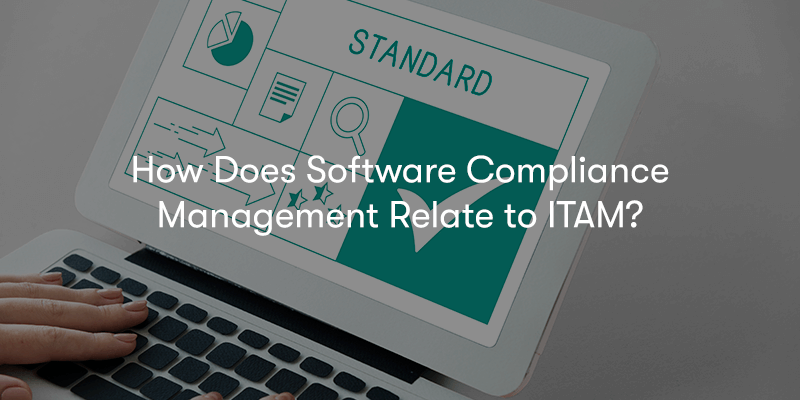
Software Compliance Management is closely related to IT Asset Management (ITAM), and the two disciplines often intersect and complement each other within an organisation. Let's discuss how they are related.
Definition and Scope
ITAM involves the management of the IT hardware, software, and related services throughout their lifecycle. It covers procurement, deployment, maintenance, and disposal of IT assets. Software compliance management is a subset of ITAM focusing specifically on ensuring that software usage within an organisation complies with licensing agreements and legal regulations.
Objectives and Focus
ITAM's primary objective is to maximise the value and minimise the risks associated with IT assets, which includes software but also extends to hardware and services. On the other hand, Software Compliance Management specifically aims to mitigate the risks of legal issues, financial penalties, and security vulnerabilities associated with non-compliant software use.
Intersecting Responsibilities
Both disciplines require an accurate inventory of software assets. ITAM provides the foundational data about what software is used, how many licenses are owned, and where and how it's deployed. Software Compliance Management leverages this information to ensure that the usage of these assets aligns with licensing terms and legal requirements.
Risk Management
ITAM involves a broader range of risk management, considering factors like asset performance, lifecycle costs, and return on investment. Software Compliance Management focuses specifically on risks related to non-compliance, such as legal penalties and cybersecurity risks.
Strategic Importance
ITAM contributes to strategic decision-making about IT investments, lifecycle management, and vendor negotiations. Software Compliance Management informs these decisions with a focus on compliance implications, helping to avoid legal and financial repercussions.
Tools and Processes
Both areas often use similar tools, such as software asset management (SAM) solutions, which track and manage the deployment of software assets. These tools help manage the overall assets (ITAM)
and ensure that their usage is within the bounds of legal and contractual obligations (Software Compliance Management).
Collaboration with Other Departments
ITAM and Software Compliance Management require collaboration with various departments like finance, procurement, legal, and operations to ensure holistic management of IT assets.
In summary, while ITAM encompasses a broader scope of managing all IT assets, Software Compliance Management is a critical component, focusing specifically on ensuring compliance in software usage. The two are interdependent, with effective ITAM providing a strong foundation for robust Software Compliance Management.
Final Notes on Software Compliance Management
In conclusion, we've delved into the intricacies of Software Compliance Management and its crucial role within the modern business landscape. From understanding its definition to grasping its importance, we've explored how compliance management safeguards organisations from legal, security, and reputational risks. We've also examined the practical steps for implementing effective compliance strategies and the severe consequences of non-compliance.
Additionally, we highlighted the essential role of compliance software as a tool for managing and automating these processes. Finally, we connected the dots between Software Compliance Management and IT Asset Management, emphasising their interdependence.
As we wrap up, it's clear that meticulous attention to software compliance is not just a legal necessity but a strategic asset in today's technology-driven business environment.


